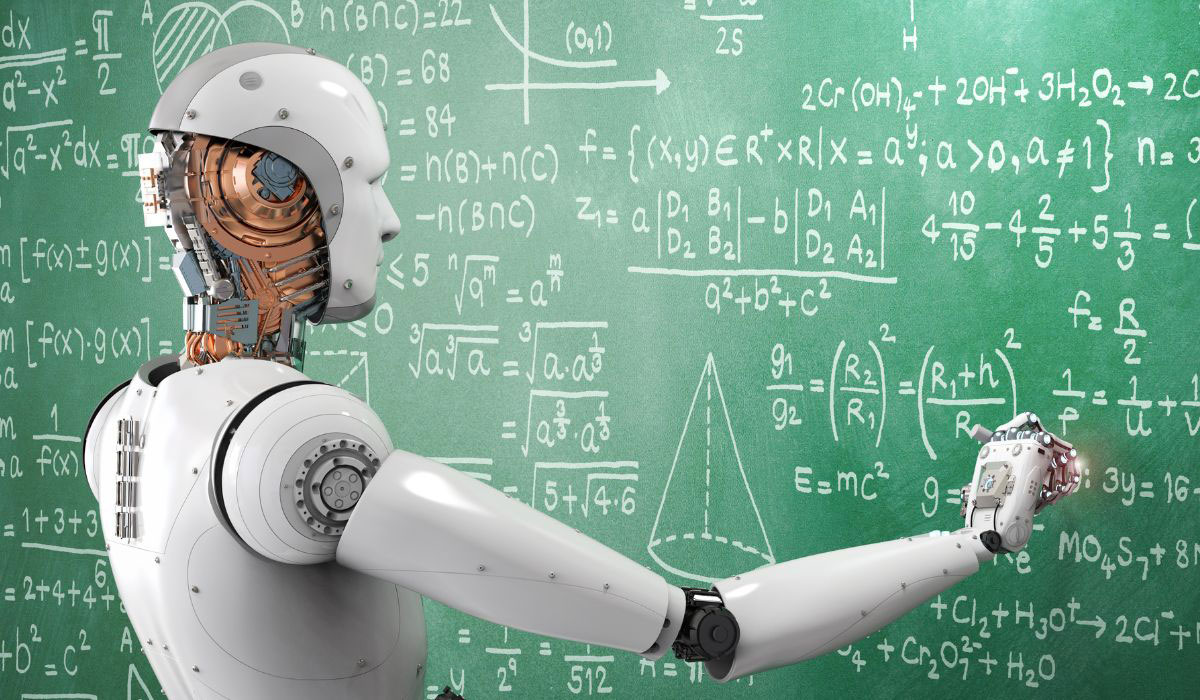Introduction
In the ever-evolving landscape of education, Artificial Intelligence (AI) has emerged as a powerful force reshaping traditional paradigms. Transitioning from conventional methods, AI transform education revolutionizes unprecedented ways. Let’s delve into 10 transformative ways AI is shaping the future of learning.
Join TechoVedas Community here
Personalized Learning Journeys:
AI acts as a virtual tutor, customizing learning experiences based on individual student needs. Imagine an AI system that analyzes a student’s strengths and weaknesses, tailoring lessons to enhance their understanding. Moreover, this personalized approach ensures optimal engagement and faster knowledge absorption..
Analogy: Just as a personal fitness trainer tailors workouts to individual fitness levels, AI crafts educational content to suit each student’s cognitive abilities.
Example: Khan Academy’s adaptive platform tailors lessons using AI, adeptly adapting difficulty as students progress. Consequently, it fosters personalized learning and ensures seamless transitions to new concepts for an enriched educational experience.
Intelligent Tutoring Systems:
AI-powered tutoring systems go beyond static textbooks, offering real-time feedback and guidance. These systems use machine learning to understand the student’s learning style and adapt teaching methods accordingly.
Analogy: Similar to a patient and adaptable chess mentor, AI tutoring systems adjust strategies based on a student’s progress.
Example: Carnegie Learning’s AI-driven tutoring system employs data analytics to provide instant feedback on math problem-solving, guiding students towards mastery.
Follow us on LinkedIn for everything around Semiconductors & AI
Gamified Learning Environments:
AI integrates gamification into educational platforms, turning learning into an immersive and enjoyable experience. By incorporating game elements, such as challenges and rewards, AI fosters a sense of achievement that motivates students.
Analogy: Like a captivating video game, AI-enhanced learning environments transform education into an engaging quest for knowledge.
Example: Duolingo leverages AI to create language-learning games that adapt to users’ proficiency levels, making the process both entertaining and effective.
Automated Administrative Tasks:
AI streamlines administrative duties, allowing educators to focus on teaching. Tasks like grading, attendance tracking, and schedule management can be automated, reducing the administrative burden on teachers.
Analogy: Just as a personal assistant handles routine tasks, AI takes care of administrative responsibilities, freeing up educators for more meaningful interactions with students.
Example: Squirrel AI automates grading processes, providing quick and accurate feedback to students while minimizing the time educators spend on assessments.
Smart Content Creation:
AI facilitates the creation of interactive and dynamic educational content. From generating quizzes to developing multimedia presentations, AI enhances the richness and diversity of learning materials.
Analogy: Similar to an ingenious scriptwriter, AI crafts compelling educational content that captures students’ attention.
Example: Canva’s AI-powered design tools assist educators in creating visually appealing presentations, infographics, and other educational materials.
Predictive Analytics for Student Success:
AI analyzes vast amounts of data to identify patterns and predict students at risk of falling behind. Early intervention strategies can then be implemented to ensure every student’s success.
Analogy: Like a weather forecasting system, AI predicts potential academic storms and enables educators to take proactive measures.
Example: Georgia State University uses an AI system to analyze student data, predicting those at risk and implementing targeted interventions that have significantly improved graduation rates.
Language Translation and Inclusive Education:
AI breaks down language barriers, making education accessible to a global audience. Real-time translation tools enable students to learn in their native language while engaging with content from diverse sources.
Analogy: Much like a universal translator, AI fosters inclusivity by making educational resources available to students worldwide, regardless of language differences.
Example: Google Translate, powered by AI, facilitates communication and learning across languages, opening up a world of educational resources for multilingual students.
Read More: 10 Free Online AI Courses From Top Companies
AI-Powered Virtual Laboratories:
In subjects like science, where hands-on experience is crucial, AI creates virtual laboratories. These simulations provide a risk-free environment for students to conduct experiments and explore scientific concepts.
Analogy: Like a flight simulator for pilots, AI-driven virtual laboratories allow students to experiment and learn without the constraints of a physical setting.
Example: Labster offers virtual labs powered by AI, allowing students to explore and conduct experiments in biology, chemistry, and physics in a virtual environment.
Facial Recognition for Attendance and Engagement:
AI employs facial recognition technology to automate attendance tracking and gauge student engagement. This not only saves time but also provides insights into students’ level of participation.
Analogy: Similar to a keen observer, AI uses facial recognition to gauge student presence and engagement, enhancing the understanding of individual participation.
Example: ClassroomMe’s AI-powered attendance system uses facial recognition to track student attendance and monitor engagement levels during lectures.
Read More:5-ways-ai-can-transform-our-cities-to-zero-carbon-footprint-zones
Emotional Intelligence in Learning:
AI is evolving to recognize and respond to students’ emotional states, fostering a supportive learning environment. By analyzing facial expressions and behavior, AI can adapt its interactions to meet the emotional needs of students.
Analogy: Like an empathetic friend, AI with emotional intelligence understands and responds to students’ feelings, creating a positive and nurturing learning atmosphere.
Example: Affectiva’s Emotion AI analyzes facial expressions to gauge students’ emotional responses, providing insights that educators can use to tailor their approach and support.
Conclusion:
As we witness the integration of AI transform education, it’s evident that the future of learning is dynamic, personalized, and inclusive. The transformative impact of AI extends beyond the classroom, reshaping the entire educational ecosystem. By embracing these advancements, educators and learners alike embark on a journey where technology and human interaction harmonize to create an enriched and adaptive educational experience.







